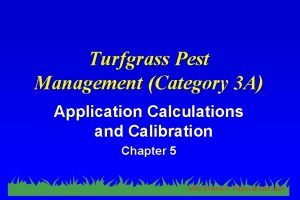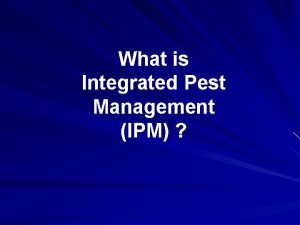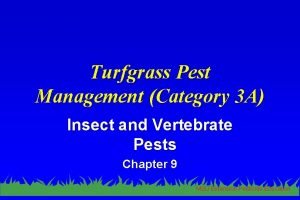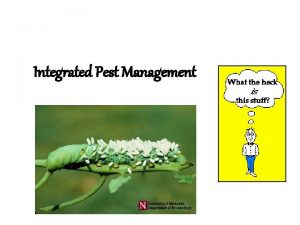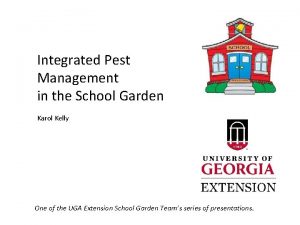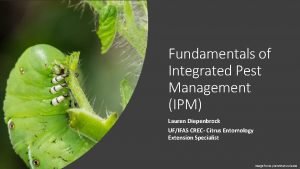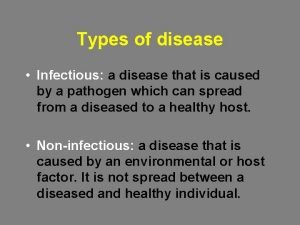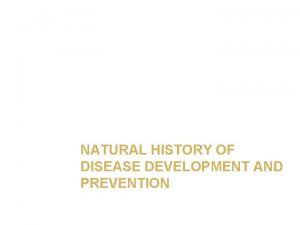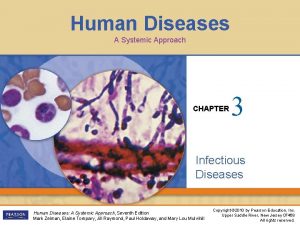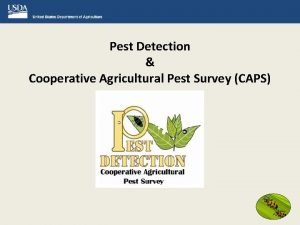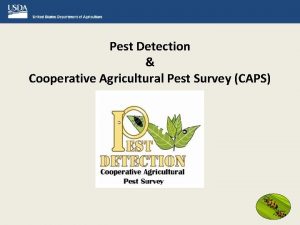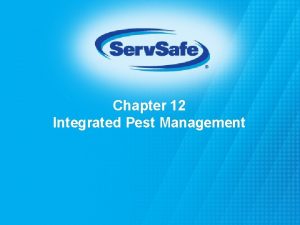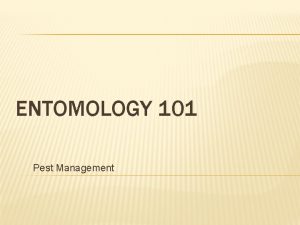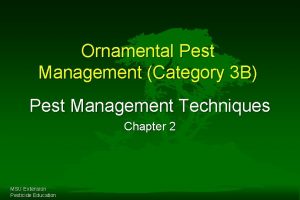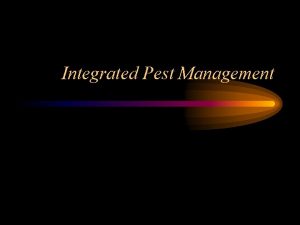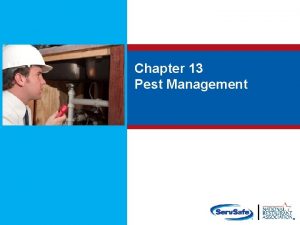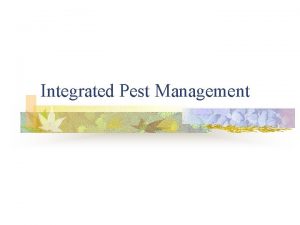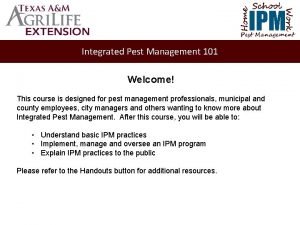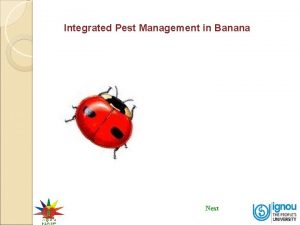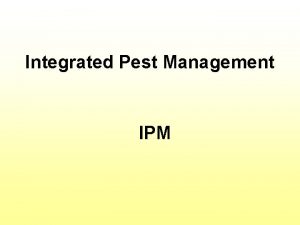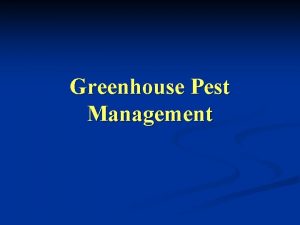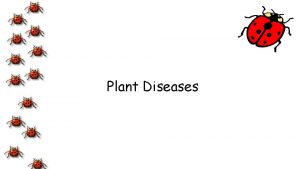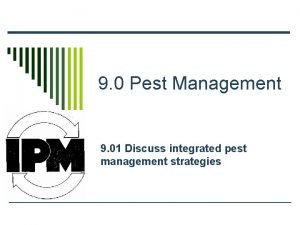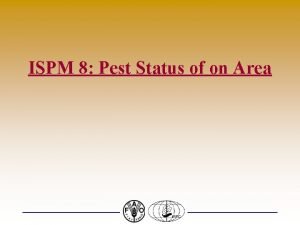8 0 Pest Management 8 02 Discuss diseases





















- Slides: 21

8. 0 Pest Management 8. 02 Discuss diseases and viruses

Plant Diseases �Definition: Disease is a plant disorder caused by an infectious pathogen or agent

Three Conditions Necessary for diseases in plants �Host plant The plant the disease attacks �Disease causing organism or pathogen must be present �Favorable environment for disease organism to develop Moist and warm

Disease Triangle

Groups of Pathogens �Bacteria �Fungi �Viruses

Bacteria �Bacteria are single celled microorganisms �Examples of common bacteria diseases: Bacterial leaf spot are rings of different shades of brown, green or yellow spots on leaves Bacterial blight cause plants to quickly turn brown or black as if they had been burned

Leaf Spot

Blight

Fungi �Fungi cannot make their own food They develop hyphae, structures that grow and absorb nutrients from the host plant Many fungi are spread by spores

Fungi �Examples of common fungi diseases: Damping off Rust Powdery Mildew Galls

Damping Off �Causes young plants and seedlings to rot off at the soil level

Rust �Causes small spots on the leaves that resemble yellow, brown, orange or red rust mainly on the underside of leaves

Powdery Mildew �Grows on the upper and lower leaf surface as white or gray powdery substance A common disease of houseplants

Galls �Round swellings or growths usually on tree branches or leaves

Fungi �Examples caused by bacteria or fungi are Powdery mildew Blights Canker Rots Wilts Smut

Virus �Viruses are pathogens with an extremely narrow host range and are usually a threat to crops �Examples caused by viruses, bacteria, or fungi are wilts and blights

Tobacco Mosaic Virus �Attacks tomatoes, pepper, poinsettias, and tobacco �Can be transferred from human hands of a smoker Be sure to wash your hands before working with plants to control the spread of this virus �Cause leaves to have irregular mottled areas with patterns ranging from dark to light green and yellow to white

Tobacco Mosaic Virus

Additional Information �Parasitic Plants attach to host plants Mistletoe Dodder Lichens �Plant diseases must be identified before they can be treated

Additional Information �Warm temperatures and moist conditions in greenhouse plant production make most plant diseases worse because of environmental conditions that support disease causing pathogens �Preventing plant diseases is better than treating the diseases.

 Amateurs talk tactics professionals talk logistics
Amateurs talk tactics professionals talk logistics Turfgrass pest management (category 3a practice test)
Turfgrass pest management (category 3a practice test) Ipm objectives
Ipm objectives Pest management alliance
Pest management alliance Turfgrass pest management
Turfgrass pest management Integrated pest management
Integrated pest management Ugalabs
Ugalabs Integrated pest management
Integrated pest management Integrated pest management ____ than pesticides
Integrated pest management ____ than pesticides What is the third step in integrated pest management?
What is the third step in integrated pest management? Safe facilities and pest management
Safe facilities and pest management What is the scope of financial accounting
What is the scope of financial accounting Different types of diseases
Different types of diseases Quality management gurus
Quality management gurus Protein deficiency diseases
Protein deficiency diseases Explain the natural history of disease
Explain the natural history of disease Modern lifestyle and hypokinetic diseases
Modern lifestyle and hypokinetic diseases Major nutritional deficiency diseases in emergencies
Major nutritional deficiency diseases in emergencies Pflegmona
Pflegmona Iceberg phenomenon of disease
Iceberg phenomenon of disease Human diseases a systemic approach
Human diseases a systemic approach Venn diagram of communicable and non-communicable diseases
Venn diagram of communicable and non-communicable diseases

